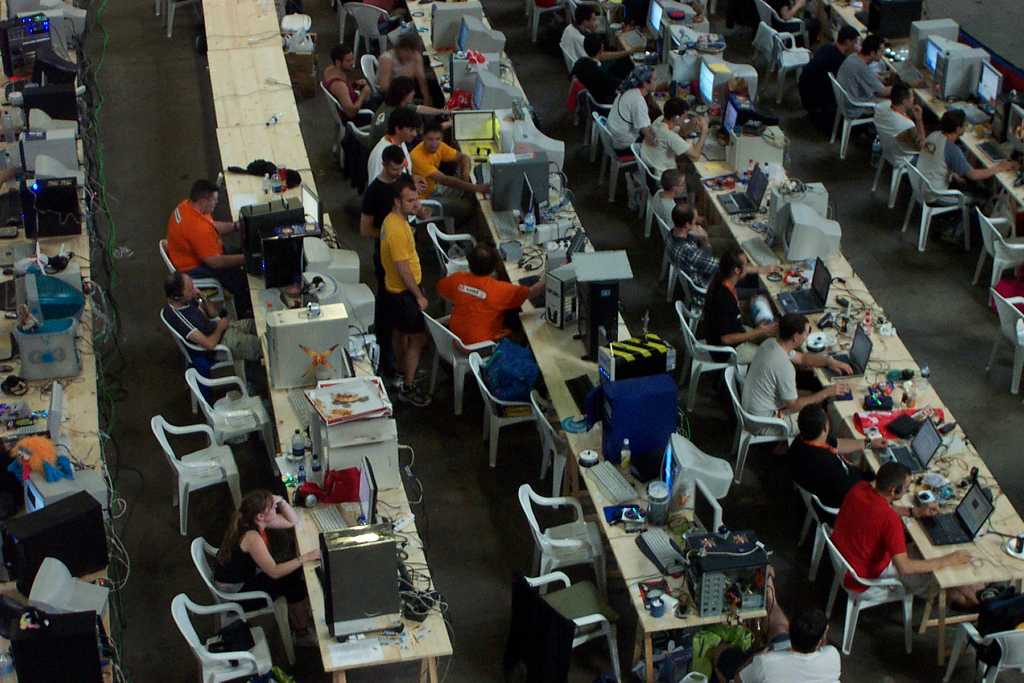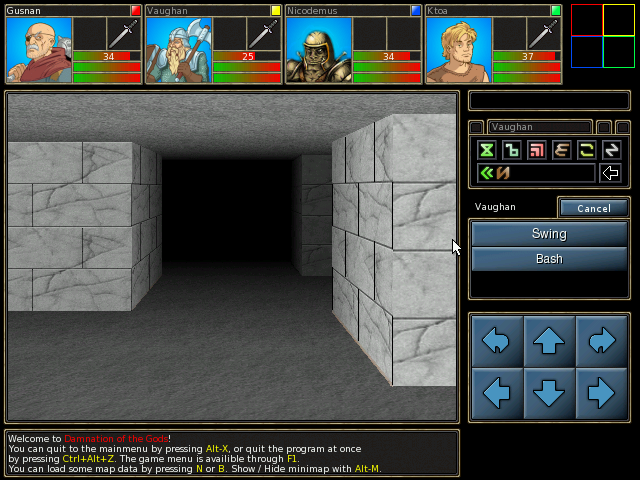|
Arsys Software
Arsys Software (アルシスソフトウェア), later known as Cyberhead (サイバーヘッド), was a Japanese video game software development company active from 1985 to 2001. Overview The company was founded as Arsys Software by former Technosoft staff members Osamu Nagano and Kotori Yoshimura on 11 November 1985. They were primarily involved in PC game development, having previously created the original ''Thunder Force'' (a 1983 free-scrolling shooter game) and '' Plazma Line'' (a 1984 space racing game considered the first computer game with 3D polygon graphics) at Technosoft. In 1986, Arsys debuted with the 3D role-playing shooter ''Wibarm'', followed by the free-roaming adventure game ''Reviver: The Real-Time Adventure'' in 1987 and the 3D first-person shooter role-playing game ''Star Cruiser'' in 1988. When ''Star Cruiser'' was released in 1988, the company only had two employees, which grew to a dozen employees by 1991, when development began on ''Star Cruiser 2'' ... [...More Info...] [...Related Items...] OR: [Wikipedia] [Google] [Baidu] |
Aksys Games
Aksys Games Localization, Inc. is a video game publisher that specializes in translating and localizing Japanese video games for English-speaking markets. It was founded by Akibo Shieh in 2006. Some of its clients include Bandai Namco Games, Xseed Games, and Atlus USA. Aksys Games is best known for its involvement in the ''Guilty Gear'' series. It has become a full-fledged game publisher with the announcement of '' Eagle Eye Golf'' for PlayStation 2, and has expressed a desire to publish for all current platforms from Microsoft, Nintendo, and Sony. The company's name is coincidentally similar to Arc System Works, with whom it has a partnership. Despite their similar names, and the partnership between them, neither company owns the other. Aksys Games publishes many games for Arc System Works in North America, and has even assisted the latter in releasing the '' Bit.Trip'' series in Japan. Aksys is also the North American distributor for the European publisher Rising Star Games ... [...More Info...] [...Related Items...] OR: [Wikipedia] [Google] [Baidu] |
Thunder Force
is a series of free-roaming scrolling shooter type video games developed by the Japanese software company Technosoft and published by Sega. The franchise is recognized for its distinctive gameplay, graphics, and synthesizer-based chiptune music soundtracks. There are six games in the series in total. The first appeared on the personal computers. The majority of installments in the series appeared on the Mega Drive console. The most recent entry was released on PlayStation 2. History The series' first game, ''Thunder Force'', appeared in 1983 on a variety of Japanese computers, such as the X1, PC-8801 mkII, and FM-7. Since ''Thunder Force II'', the majority of installments in the series appeared on the Mega Drive console, where the series gained much of its popularity. The most recent entry was released on PlayStation 2. The original ''Thunder Force'' video game was created by Kotori Yoshimura in 1983. She later left Technosoft and founded Arsys Software in 1985, where her ... [...More Info...] [...Related Items...] OR: [Wikipedia] [Google] [Baidu] |
SystemSoft Alpha
SystemSoft Alpha Corporation is a Japanese software development company. Formerly just "SystemSoft", they have a long series of mainly military strategic simulation games (generally hex-based) popular in the Japan market. Notable among these are the many ''Daisenryaku'' and ''Master of Monsters'' series games that have been ported to multiple platforms from PCs to consoles. In 1998, SystemSoft spun off their video game business into SystemSoft Production. In 1999, Alpha Shock was founded, and SystemSoft invested 25.1% of the initial capital. In 2001, SystemSoft sold all investments of Alpha Shock, and they transferred the video game business from SystemSoft Production to Alpha Shock. Alpha Shock were renamed to SystemSoft Alpha, although they are independent from SystemSoft. The main website for the game division, regardless of platform, is now SystemSoft Alpha, but "Alpha" still is not seen in the logo of the company on game boxes. Only a handful of the dozens of games in th ... [...More Info...] [...Related Items...] OR: [Wikipedia] [Google] [Baidu] |
Prince Of Persia (1989 Video Game)
''Prince of Persia'' is a cinematic platform game developed and published by Broderbund for the Apple II in 1989. It was designed and implemented by Jordan Mechner. Taking place in medieval Persia, players control an unnamed protagonist who must venture through a series of dungeons to defeat the evil Grand Vizier Jaffar and save an imprisoned princess. Much like ''Karateka'', Mechner's first video game, ''Prince of Persia'' used rotoscoping for its fluid and realistic animation. For this process, Mechner used as reference for the characters' movements videos of his brother doing acrobatic stunts in white clothes, and swashbuckler films such as ''The Adventures of Robin Hood''. The game was critically acclaimed but was not an immediate commercial success, as it was released at the tail end of the Apple II's relevance. It sold many copies as it was ported to a wide range of platforms. It is believed to have been the first cinematic platformer and inspired many games in this su ... [...More Info...] [...Related Items...] OR: [Wikipedia] [Google] [Baidu] |
Porting
In software engineering, porting is the process of adapting software for the purpose of achieving some form of execution in a computing environment that is different from the one that a given program (meant for such execution) was originally designed for (e.g., different CPU, operating system, or third party library). The term is also used when software/hardware is changed to make them usable in different environments. Software is ''portable'' when the cost of porting it to a new platform is significantly less than the cost of writing it from scratch. The lower the cost of porting software relative to its implementation cost, the more portable it is said to be. Etymology The term "port" is derived from the Latin '' portāre'', meaning "to carry". When code is not compatible with a particular operating system or architecture, the code must be "carried" to the new system. The term is not generally applied to the process of adapting software to run with less memory on the same ... [...More Info...] [...Related Items...] OR: [Wikipedia] [Google] [Baidu] |
First-person Shooter
First-person shooter (FPS) is a sub-genre of shooter video games centered on gun and other weapon-based combat in a first-person perspective, with the player experiencing the action through the eyes of the protagonist and controlling the player character in a three-dimensional space. The genre shares common traits with other shooter games, and in turn falls under the action game genre. Since the genre's inception, advanced 3D and pseudo-3D graphics have challenged hardware development, and multiplayer gaming has been integral. The first-person shooter genre has been traced back to '' Wolfenstein 3D'' (1992), which has been credited with creating the genre's basic archetype upon which subsequent titles were based. One such title, and the progenitor of the genre's wider mainstream acceptance and popularity, was ''Doom'' (1993), often considered the most influential game in this genre; for some years, the term ''Doom'' clone was used to designate this genre due to ''Doom''s ... [...More Info...] [...Related Items...] OR: [Wikipedia] [Google] [Baidu] |
Adventure Game
An adventure game is a video game genre in which the player assumes the role of a protagonist in an interactive story driven by exploration and/or puzzle-solving. The genre's focus on story allows it to draw heavily from other narrative-based media, literature and film, encompassing a wide variety of literary genres. Many adventure games ( text and graphic) are designed for a single player, since this emphasis on story and character makes multiplayer design difficult. ''Colossal Cave Adventure'' is identified as the first such adventure game, first released in 1976, while other notable adventure game series include '' Zork'', '' King's Quest'', '' Monkey Island'', and '' Myst''. Initial adventure games developed in the 1970s and early 1980s were text-based, using text parsers to translate the player's input into commands. As personal computers became more powerful with better graphics, the graphic adventure-game format became popular, initially by augmenting player's text c ... [...More Info...] [...Related Items...] OR: [Wikipedia] [Google] [Baidu] |
Role-playing Shooters
An action role-playing game (often abbreviated action RPG or ARPG) is a subgenre of video games that combines core elements from both the action game and role-playing genre. Definition The games emphasize real-time combat where the player has direct control over the characters as opposed to turn or menu-based combat while still having a focus on character's Stats in order to determine relative strength and abilities. These games often use action game combat systems similar to hack and slash or shooter games. Action role-playing games may also incorporate action-adventure games, which include a mission system and role-playing game mechanics, or MMORPGs with real-time combat systems. History 1970s and early 1980s Allgame listed the following games released prior to 1984 as action RPGs: ''Temple of Apshai'' (1979) and its sequel '' Gateway to Apshai'' (1983), ''Beneath the Pyramids'' for the Apple II (1980), ''Bokosuka Wars'' (1983), and ''Sword of Fargoal'' (1983). Jerem ... [...More Info...] [...Related Items...] OR: [Wikipedia] [Google] [Baidu] |
3D Computer Graphics
3D computer graphics, or “3D graphics,” sometimes called CGI, 3D-CGI or three-dimensional computer graphics are graphics that use a three-dimensional representation of geometric data (often Cartesian) that is stored in the computer for the purposes of performing calculations and rendering digital images, usually 2D images but sometimes 3D images. The resulting images may be stored for viewing later (possibly as an animation) or displayed in real time. 3D computer graphics, contrary to what the name suggests, are most often displayed on two-dimensional displays. Unlike 3D film and similar techniques, the result is two-dimensional, without visual depth. More often, 3D graphics are being displayed on 3D displays, like in virtual reality systems. 3D graphics stand in contrast to 2D computer graphics which typically use completely different methods and formats for creation and rendering. 3D computer graphics rely on many of the same algorithms as 2D computer vector ... [...More Info...] [...Related Items...] OR: [Wikipedia] [Google] [Baidu] |
Racing Video Game
Racing games are a video game genre in which the player participates in a racing competition. They may be based on anything from real-world racing leagues to fantastical settings. They are distributed along a spectrum between more realistic racing simulations and more fantastical arcade-style racing games. Kart racing games emerged in the 1990s as a popular sub-genre of the latter. Racing games may also fall under the category of sports video games. Sub-genres Arcade-style racing Arcade-style racing games put fun and a fast-paced experience above all else, as cars usually compete in unique ways. A key feature of arcade-style racers that specifically distinguishes them from simulation racers is their far more liberal physics. Whereas in real racing (and subsequently, the simulation equivalents) the driver must reduce their speed significantly to take most turns, arcade-style racing games generally encourage the player to "powerslide" the car to allow the player to keep up the ... [...More Info...] [...Related Items...] OR: [Wikipedia] [Google] [Baidu] |
Plazma Line
was a Japanese video game developer and publisher based headquartered in Sasebo, Nagasaki. Also known as "Tecno Soft", the company was founded in February 1980 as Sasebo Microcomputer Center, before changing its name to Technosoft in 1982. The company primarily dealt with software for Japanese personal computers, including graphic toolsets and image processing software. Technosoft's first venture into the video game market was ''Snake & Snake'', released in 1982, before seeing success with titles such as ''Thunder Force'' (1983) and ''Plasma Line'' (1984). Technosoft became largely profitable during the late-1980s and early-1990s, largely in part due to the widespread popularity of their ''Thunder Force'' and ''Herzog'' franchises. However, later in the decade, Technosoft began to largely diminish as profits began to slump, before ultimately being acquired and folded into Japanese pachinko manufacturer Twenty-One Company in late 2001. Twenty-One began to release products in 2008 ... [...More Info...] [...Related Items...] OR: [Wikipedia] [Google] [Baidu] |




